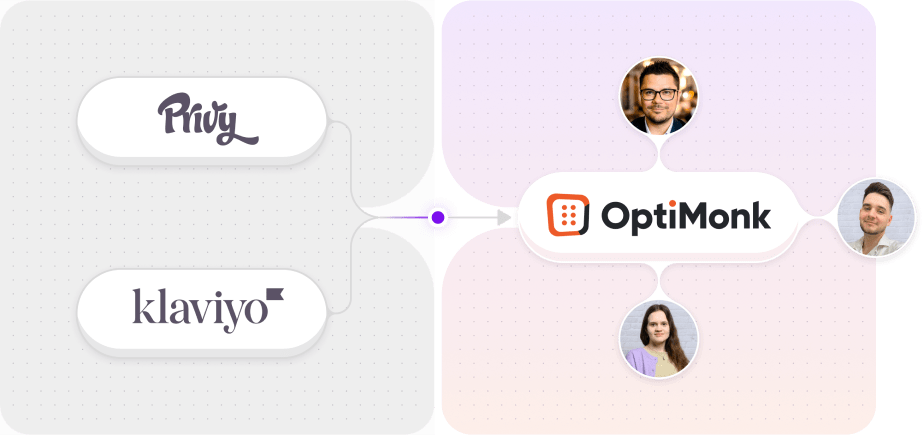Table of Contents
Ever wondered what’s the secret sauce behind loyal customers who keep coming back to your store— and even recommend it to their friends?
Well, the answer might lie in a simple yet powerful metric: the net promoter score (NPS).
If you’re running an ecommerce business and you haven’t yet unlocked the power of NPS, it’s high time you do. Not only does NPS reveal your customers’ loyalty, but it also provides key insights that can boost both customer satisfaction and sales.
Understanding your net promoter score can also help you optimize customer lifetime value, a key metric for evaluating long-term business performance and profitability.
So, how exactly does NPS work, and how can you use it to fuel your ecommerce growth? Let’s dive in!
What is the net promoter score (NPS)?
The net promoter score (NPS) is a metric designed to measure customer loyalty and predict customer behavior.
It’s a reflection of how likely your customers are to recommend your business to others— and that is crucial for e-commerce growth.
NPS is a simple yet powerful tool because it directly impacts both earning loyal customers and enhancing the customer experience. The more loyal your customers are, the more likely they are to return, make repeat purchases, and become brand ambassadors who drive new customers to your site.
NPS is an invaluable tool that businesses use to gauge customer satisfaction, build stronger relationships, and boost sales in the long run.
How does NPS differ from customer satisfaction surveys?
You might be thinking: “Doesn’t a customer satisfaction survey do the same thing as NPS?” Well, sort of—but not exactly.
Here’s the key difference: NPS measures customer loyalty and helps predict how likely a customer is to recommend your business.
Customer satisfaction surveys, on the other hand, gauge how satisfied a customer is with a particular product, service, or experience at a single point in time.
NPS is more forward-looking and predictive of growth. Higher NPS scores correlate with higher business growth rates, while companies with lower scores tend to stagnate or even lose market share. This makes NPS a more reliable indicator for long-term business success.
How to calculate net promoter score?
The beauty of NPS lies in its simplicity. It is typically calculated based on the response to a single question:
“On a scale of 0 to 10, how likely are you to recommend our company/product/service to a friend or colleague?”
Then, customers are categorized as:
- Detractors (0-6): Unhappy customers who are unlikely to recommend your brand and could spread negative word-of-mouth, which can harm your reputation.
- Passives (7-8): Customers who are satisfied but not enthusiastic. They’re at risk of being swayed by competitors.
- Promoters (9-10): Loyal customers who are likely to refer your brand to others and become repeat buyers.
Now, to calculate NPS:
NPS = % of Promoters – % of Detractors
The score will range from -100 to +100. A negative NPS means you have more detractors than promoters (ouch!), while a positive NPS indicates that promoters outnumber detractors.
What is a good NPS score for ecommerce businesses?
The magic number for a good net promoter score varies across industries, but in the ecommerce industry, an NPS score of 45 is considered solid.
Here’s a quick guide:
- Above 0: This means your promoters are outnumbering your detractors, which is a good start.
- Above 30: Indicates you’re doing well, but there’s room for improvement.
- Above 70: If you’re hitting this, you’re in exceptional territory! Your customers are highly loyal and likely to help grow your business through positive word-of-mouth.
How to collect NPS feedback?
To gather valuable insights, it’s important to choose the right tools for collecting NPS surveys.
Here are some effective ways to do it:
1. Website surveys
Website surveys are one of the most direct ways to collect NPS feedback from customers while they’re actively engaged with your site.
These surveys typically pop up as a small widget or an overlay when a user is about to exit the page or after they complete an action like making a purchase or browsing a product.
2. Email surveys
Email surveys are a great way to reach out to your entire customer base, especially those who may not interact with your site on a regular basis.
After key customer milestones (like making a purchase, subscribing to a newsletter, or interacting with customer support), send out an NPS survey via email to get their feedback.
3. Transactional surveys
Transactional surveys are triggered by specific customer interactions, such as making a purchase, interacting with customer support, or receiving an order.
This type of survey allows you to measure satisfaction immediately after a specific customer experience, making the customer feedback highly relevant.
4. Relational surveys
Relational surveys are typically sent periodically (e.g., quarterly, bi-annually, or annually) to measure overall satisfaction and customer loyalty over time.
These surveys give you a broader view of customer sentiment, helping you understand trends in satisfaction and loyalty that may not be captured through transactional surveys.
How to improve customer loyalty with NPS?
Now that you know what NPS is and how to collect feedback, let’s dive into how you can use this powerful metric to drive loyalty and sales.
1. Use NPS to drive customer-centric decisions
Don’t just collect NPS data—analyze it! Look for patterns and trends in customer feedback.
For instance, if a lot of detractors are complaining about the same issue (say, slow shipping), that’s a red flag that needs immediate attention.
NPS gives you a window into what your customers truly value, so use that data to make decisions that improve their overall customer experience.
Maybe it’s speeding up the checkout process, optimizing your mobile site, or offering better customer support.
2. Boost referral marketing and reduce churn
NPS isn’t just a reflection of your customer experience—it’s a tool to boost sales. Encourage your promoters (those who score 9-10) to spread the word by writing reviews or referring friends. You could even incentivize this with discounts or loyalty points.
By focusing on referral marketing, you can harness the organic power of word-of-mouth, which is often more effective than paid advertising.
Also, use your NPS feedback to reduce churn by identifying pain points that might drive customers away.
For instance, if customers are unhappy with delivery times, improving your logistics could go a long way toward retaining them.
3. Create a seamless buyer journey and checkout process
One of the best ways to improve your NPS score is to optimize your buyer journey.
If customers struggle to navigate your website or encounter issues during checkout, they’re likely to give you a low NPS score.
Consider using NPS data to identify areas where customers drop off or express frustration. Make your store’s navigation user-friendly, and ensure that your checkout process is quick and easy. A smooth, hassle-free shopping experience is key to improving customer satisfaction and, ultimately, loyalty.
Wrapping up
Net promoter score (NPS) is more than just a metric—it’s a powerful tool that can help you identify areas for improvement, improve customer retention, and drive sales growth.
Whether you’re measuring customer satisfaction, optimizing your customer journey, or encouraging referrals, NPS calculation will guide you every step of the way.
So, what are you waiting for? Start leveraging your NPS score to improve customer loyalty and watch your sales soar!
Migration has never been easier
We made switching a no-brainer with our free, white-glove onboarding service so you can get started in the blink of an eye.

What should you do next?
Thanks for reading till the end. Here are 4 ways we can help you grow your business:
Boost conversions with proven use cases
Explore our Use Case Library, filled with actionable personalization examples and step-by-step guides to unlock your website's full potential. Check out Use Case Library
Create a free OptiMonk account
Create a free OptiMonk account and easily get started with popups and conversion rate optimization. Get OptiMonk free
Get advice from a CRO expert
Schedule a personalized discovery call with one of our experts to explore how OptiMonk can help you grow your business. Book a demo
Join our weekly newsletter
Real CRO insights & marketing tips. No fluff. Straight to your inbox. Subscribe now
- Posted in
- Ecommerce
Partner with us
- © OptiMonk. All rights reserved!
- Terms of Use
- Privacy Policy
- Cookie Policy
Product updates: January Release 2025








